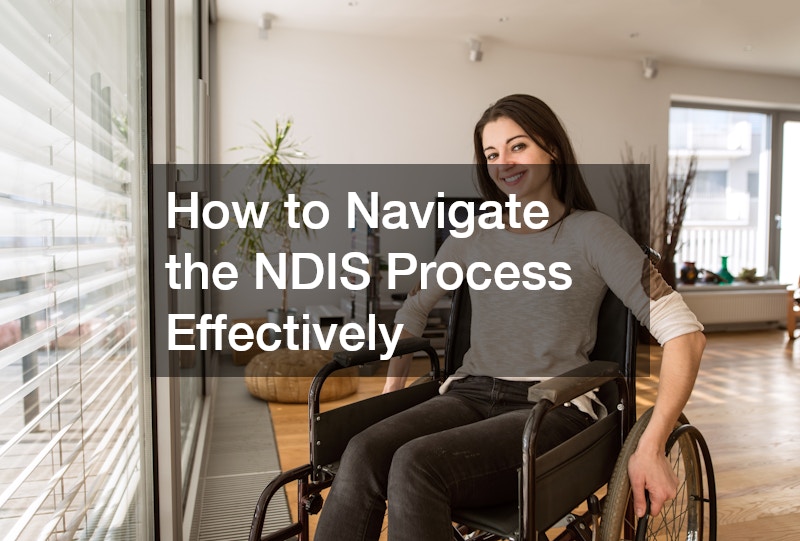Navigating the National Disability Insurance Scheme ( NDIS) can feel overwhelming, especially for individuals and families new to the process. With multiple stages, assessments, and ongoing management requirements, understanding how to approach each step with clarity and confidence is essential. Whether you are seeking support for yourself or someone close to you, a well-informed approach can make the NDIS journey far more manageable and empowering.
Understanding Eligibility & Access
The first step to engaging with the NDIS is determining whether you or your loved one meets the eligibility criteria. Applicants must be under the age of 65, be an Australian citizen or permanent resident, and have a permanent and significant disability that affects their ability to take part in everyday activities. It’s vital to provide strong supporting evidence with the initial access request. This includes medical reports, assessments, and records that demonstrate how the disability affects daily functioning.
Once eligibility is established, the next step involves completing the NDIS Access Request Form. It’s important to take time during this phase, as the quality of the documentation submitted can significantly affect the outcome. Incomplete or vague applications can delay access or result in denial, causing unnecessary stress and delays in support.
Preparing for the Planning Meeting
After the NDIS access request is approved, the participant is invited to attend a planning meeting. This session is critical because it sets the foundation for the participant’s NDIS plan. Preparation is key to success at this stage. It’s helpful to think about daily routines, challenges, goals, and any services or equipment already in use. Writing these points down beforehand can ensure nothing important is overlooked during the meeting.
During the planning session, a Local Area Coordinator or NDIS planner will ask about the participant’s short- and long-term goals, current supports, and what kinds of assistance are needed to live more independently and participate more fully in the community. Be honest and specific. Explain what has worked in the past and what hasn’t. This level of detail helps the planner design a plan that truly reflects the participant’s needs.
Creating a Plan That Works
Once the meeting is completed, the planner will develop a personalised plan outlining the funded supports that have been approved. Plans typically include funding for core supports, capital supports, and capacity-building supports. It is important to review the plan carefully once received, checking that all necessary services and supports have been included. If anything appears missing or incorrect, participants have the right to request a review.
It’s also beneficial to consider how funds will be managed. There are several options: self-management, plan management, or agency management through the NDIS. Each has its pros and cons depending on the participant’s level of independence, confidence, and willingness to handle administrative tasks. Choosing the right funding management approach can significantly impact how flexibly supports are delivered.
Using & Reviewing the Plan
Once the NDIS plan is in place, the next phase is implementation. This involves connecting with service providers, organising support workers, and ensuring that the participant is receiving the services outlined in the plan. Some individuals choose to work with a support coordinator to help navigate this stage, particularly if the plan includes more complex or high-level supports.
Keeping a record of how funds are spent and monitoring progress toward personal goals can help ensure the plan remains on track. Regularly reviewing services and making sure they are meeting expectations is a healthy habit that ensures the participant gets maximum value from their plan.
It’s also crucial to be proactive about reviewing the plan. Most plans are set for 12 or 24 months, at which point they can be revised and updated. However, if circumstances change — such as a health deterioration, housing relocation, or employment shift — participants can request a plan reassessment at any time. Being vigilant and organised helps keep the plan relevant and effective over time.
Getting Help Along the Way
The NDIS process involves multiple layers of communication, documentation, and decision-making. Fortunately, help is available. Local Area Coordinators, support coordinators, and advocacy organisations can assist participants in understanding their rights and options. These professionals can help clarify confusing aspects of the scheme, resolve conflicts, and provide advice on how to request plan changes or lodge appeals.
Online resources, community forums, and disability support networks can also provide valuable peer-to-peer insights. Hearing from others who have gone through the same journey can provide reassurance, practical tips, and emotional support.
Embracing the Opportunities
While the process can initially seem bureaucratic, the NDIS ultimately exists to empower individuals living with disability. When approached with preparation, clarity, and assertiveness, it becomes a gateway to greater independence, inclusion, and wellbeing.
By learning the system, asking for help when needed, and being actively involved in every stage, participants and their families can take full advantage of the supports available through the NDIS. Taking the time to understand how the scheme works and how to make it work for you can lead to lasting improvements in quality of life, access to community, and the realisation of personal goals.
With the right knowledge and support, navigating the NDIS does not need to be daunting. Instead, it can become a transformative process that opens the door to new possibilities, stronger support networks, and a more empowered future.




